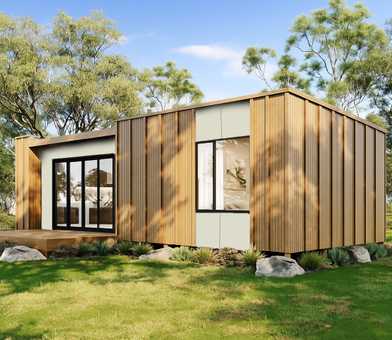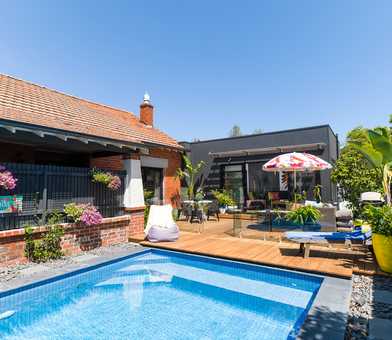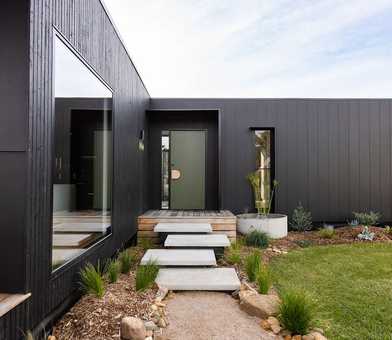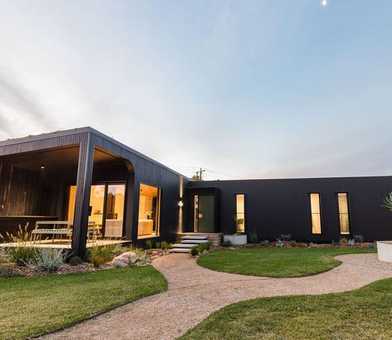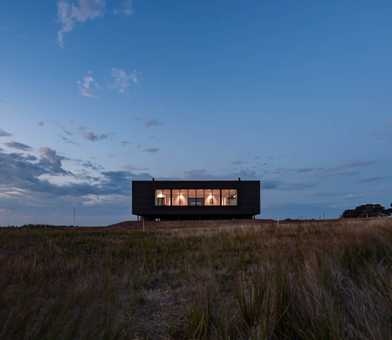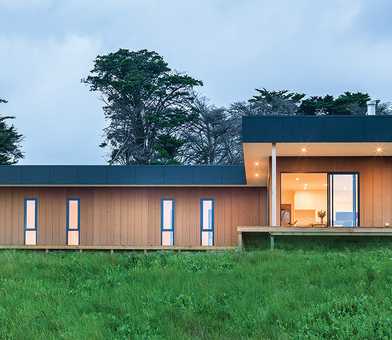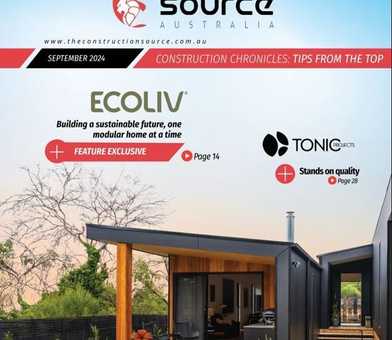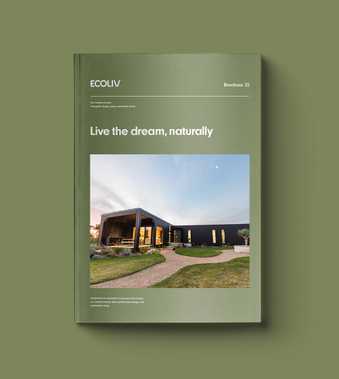Climate change continues to drive longer, more hazardous fire seasons across Australia. With this comes the need for increased awareness around what you can do to protect yourself and your family from any current and future fire-associated dangers.
The 2019 fire season marked a traumatic period for Australia – affecting humans, wildlife, and our natural environment. Experts predict that in Victoria and New South Wales alone 1 billion animals perished in the fires, with land requiring several years to regenerate in order to sustain healthy beehives.
The Bushfire Attack Level (BAL) rating is an Australian government standard that measures the potential for your home to be exposed to bush fire attack. Here at Ecoliv, bushfire safety is of utmost importance to us, and we’re taking the opportunity to share our fire safety knowledge and home building procedures.
Planning a modular home is a considered process, which takes into account both function and aesthetics as well as the surrounding environment. One of the most important aspects to consider is how the risk of bushfire will influence the construction requirements that are necessary to keep your home and family safe.
BAL ratings explained
The BAL rating is the Australian standard for measuring the risk of a home’s exposure to ember attack, radiant heat and direct flame contact. The BAL rating determines the construction and building requirements necessary to protect homes in bushfire prone areas. There are six levels of the BAL rating in accordance with the Australian Standard – AS 3959:2018 Construction of buildings in bushfire-prone areas. We’ve detailed each of the BAL ratings, along with what they mean, in the table below.
| Bushfire attack level | Radiant heat exposure | Description |
|---|---|---|
| BAL LOW | 0 to 12.5 kW per sq m | This is the lowest BAL rating you can receive in a bushfire prone area which indicates that there is risk of ember attack but the possible radiant heat flux exposure will not be greater than 12.5kW per square metre. This rating means there are no special construction requirements. |
| BAL 12.5 | 0 to 12.5 kW per sq m | This is a low risk rating. It indicates possible radiant heat flux exposure at a maximum of 19kW per square metre and risk of wind-ignited embers and burning debris that could cause an ember attack. |
| BAL 19 | 12.5 to 19 kW per sq m | This is a moderate risk rating with the same potential heat flux exposure as BAL 12.5 but with a greater likelihood of exposure. Similarly, there are no special requirements for the floors and subfloor, and the same construction requirements for the rest of the house with the exception of 5mm safety glass instead of 4mm. |
| BAL 29 | 19 to 29 kW per sq m | This is a high risk rating which means the risk of ember attack is increased and the radiant heat flux exposure may be up to 29kW per square metre. There are more extensive building requirements than lower ratings. |
| BAL 40 | 29 to 40 kW per sq m | This is a very high risk rating which means that the risk of ember attack is much greater with some likelihood of direct exposure to flames and radiant heat flux exposure up to 40kW per square metre. |
| BAL FZ | 40 kW per sq m and flame contact | This is an extremely high risk rating indicating great risk of ember attack and extreme radiant heat exposure plus direct exposure to flames. The radiant heat flux exposure risk is the same as BAL 40. |
Building design in bushfire prone areas
The BAL rating of a building site dictates the materials and building design elements that need to be taken into account. These are some of the design elements and when you need to take them into consideration.
External walls
From a BAL rating of 19 and upwards, external walls must be made from specific materials – namely, non-combustible material or bushfire resistant timber. For our Callala project which is in a BAL-FZ zone (the highest possible rating), the exterior walls utilise James Hardie Axon fibre cement cladding for its fire resistance and longevity.
'Callala beach', 'The exterior wall on our Callala Beach project is made from fire retardant cladding by James Hardie.'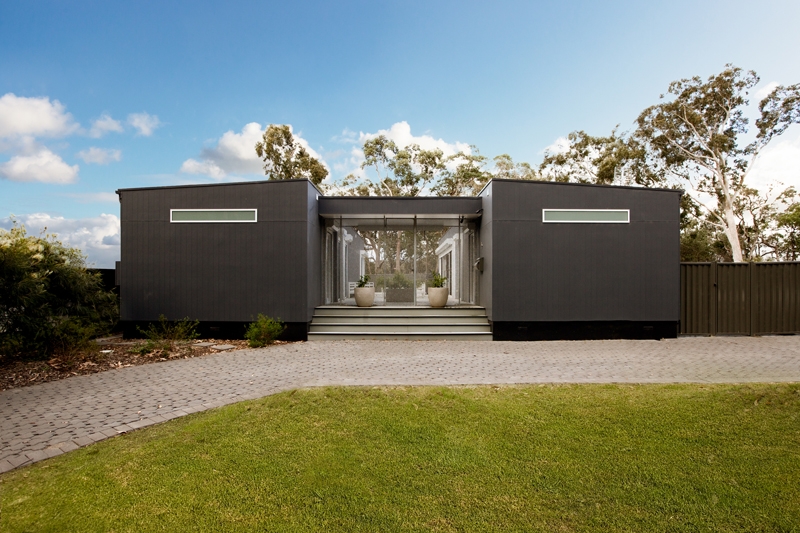
Roofing
In the case of a BAL 40 rating, roofing materials need to be made of non-combustible materials such as steel. Where the BAL rating is 12.5 and up, roofs need to be fully sarked and the junction between the roof and walls must be completely sealed.
Penetrations through roofs or walls
When you have a higher BAL rating, you’ll need to take into account any openings that come through walls or the roof. This includes things like vents, extractor fans, and downpipes – all of which should be made from metal, rather than PVC to ensure they are more heat resistant.
Windows, shutters, and doors
Glass openings to your house, including windows and glass doors, can break during a bushfire from flying debris and heat. Thicker, toughened glass should be used along with frames made from materials that match the criteria of the BAL rating.
Tight-fitting window shutters can also be implemented to protect windows during bushfires. You can view an example of these in our Callala Beach Project in a BAL-FZ zone below.
'Callala beach', 'Bushfire window shutters at our Callala Beach Project.'
Decks and under floors
Floors should be built low to the ground with a subfloor structure that is made from non-combustible materials. Decks should be made with non-combustible materials or bushfire-resistant timber, depending on the BAL rating.
Decks are built as standalone structures and not directly connected to the house – this ensures that in the case of them igniting that they can detach from the house as they burn rather than spreading fire into the main structure of the home.
'Callala beach', The bushfire-resistant deck built at our Callala project, rated BAL-FZ. '
Sealing gaps
All gaps between cladding and eaves, as well as doors and windows should be sealed to prevent embers from lodging in-between gaps and making the building catch fire. Sealing off these gaps also helps to create a more energy efficient home by preventing uncontrolled ventilation.
Rainwater tank for firefighting
In many bushfire prone areas the relevant fire authority in your area may require a water tank to be installed on site specifically for firefighters to access this water to defend homes when required. Fire fighting water tanks must be above ground, made from non-combustible materials and include a pump system suitable for fire fighting purposes.
BAL rating checklist
If you’re building a prefab modular home in a bushfire prone area there are several things you need to consider to ensure you’re adhering to the BAL rating.
- Get a BAL assessment for your building site. This must be done by a qualified consultant who will assess the site and provide instructions so the build can be designed and constructed in accordance with Standard (AS) 3959 – 2009 Construction of buildings in bushfire prone areas. You can contact your local council or visit the Fire Protection Authority website for a list of qualified contractors.
- The contractor will then provide a report as to the appropriate building materials and any other build specifications required.
- If your BAL rating is 12.5 or higher, Ecoliv will suggest the appropriate materials to ensure your sustainable home meets the BAL rating building code for your specific site. Often a home in a BAL area will require council and Fire Authority Approvals.
- Depending on your BAL rating, a fire-resistant home does come at an extra cost.
Building a home with Ecoliv in a bushfire prone area
Ecoliv implores you to stay updated about bushfires regardless of your location within Australia.
Bushfire safety should be of utmost priority, specifically for Australians given the prevalence of bushfires and climate change in our country. Building your sustainable Ecoliv home is absolutely achievable if you are living in a bushfire prone area.
Our designers will work meticulously to ensure that your home design and construction reflects the relevant BAL rating. To find out more about our building process and design features you can view some of our recent projects or read about our custom designed homes.

